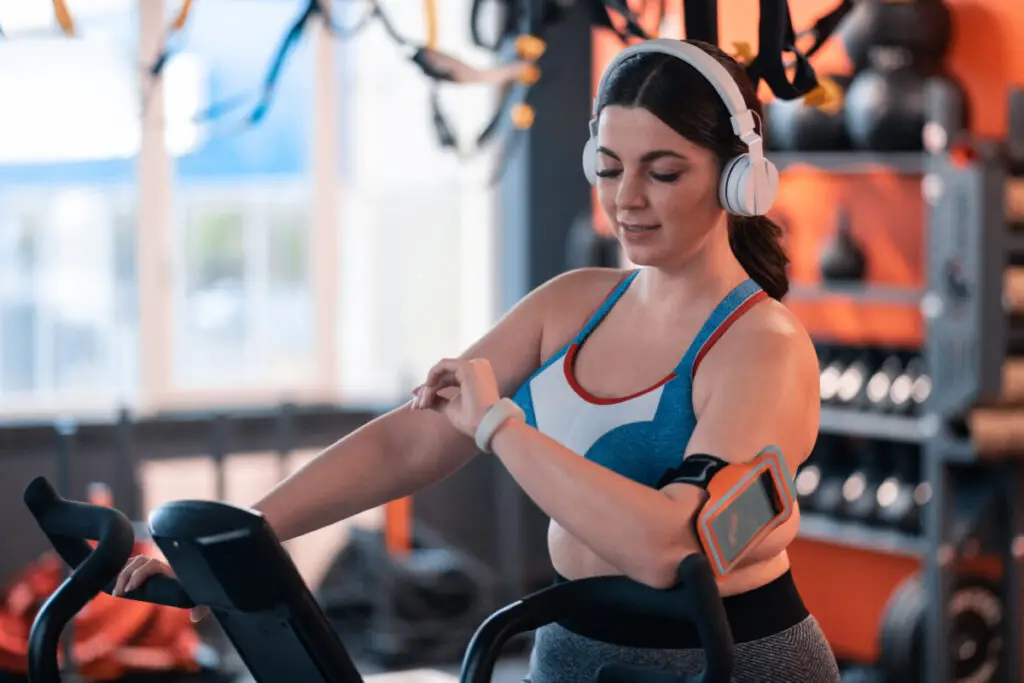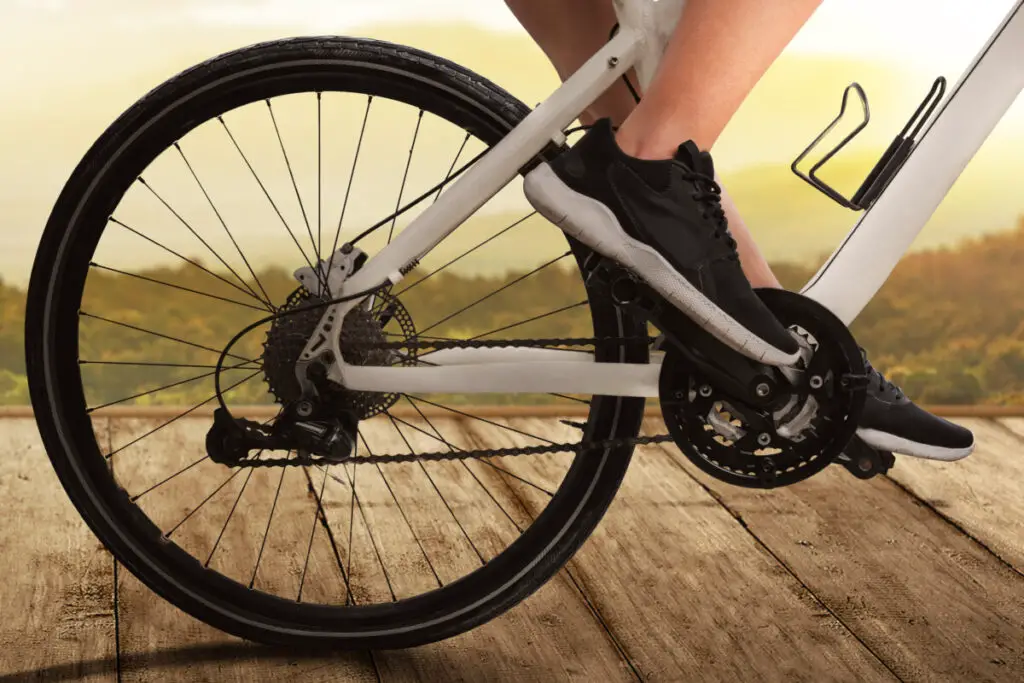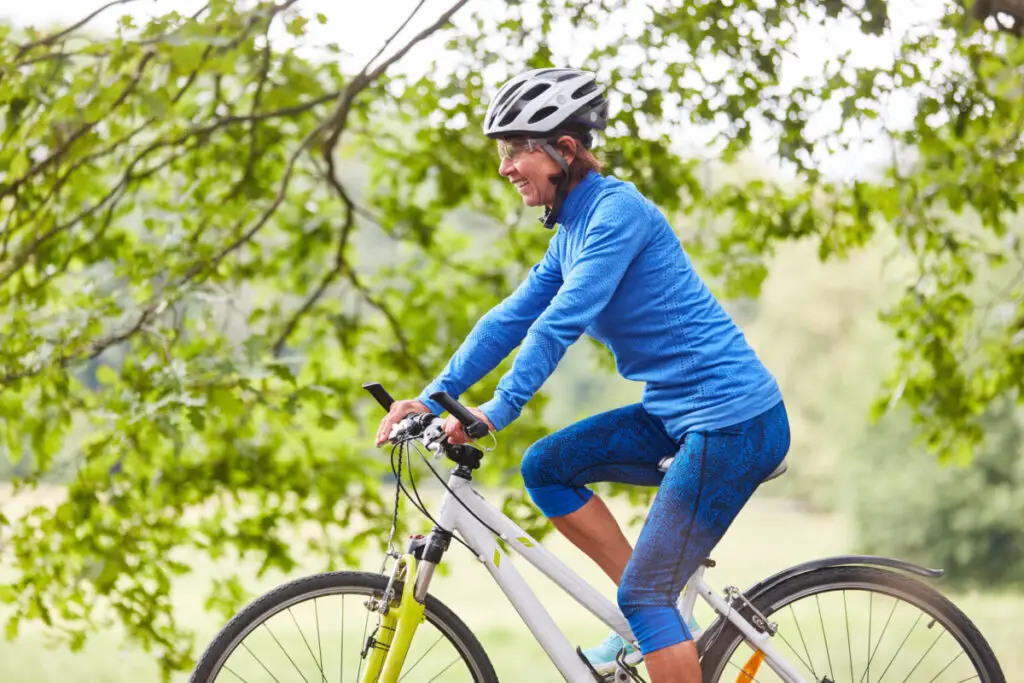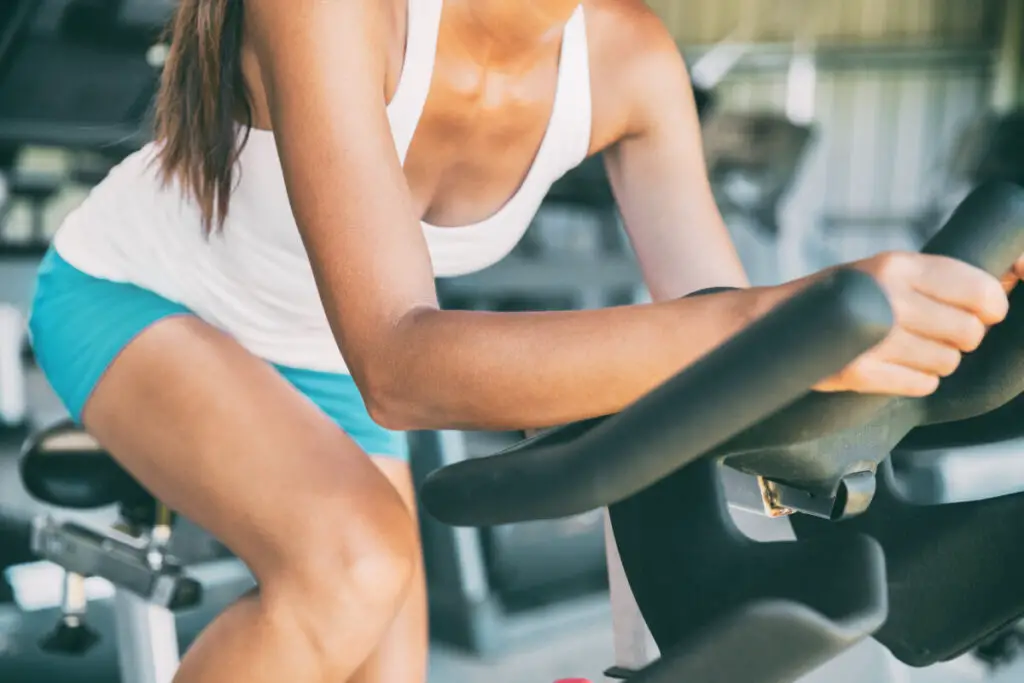Fitness is such an important part of keeping our bodies healthy and active. People exercise for all sorts of reasons, from wanting to gain muscle and weight, to wanting to slim down and tone. No matter the reason you exercise, cycling can help you reach your goals and be a great addition to your workout routine.
Cycling can reduce belly fat, as it burns calories, lowers overall bad fats while increasing good fats, and increases the body’s ability to use glucose instead of store it. Losing belly fat is just one of the many benefits of cycling, whether indoors or outdoors.
While burning belly fat is a benefit that so many people are drawn to when it comes to adding cycling to their fitness regimen, there are so many more benefits than just burning fat. Keep reading to learn about all of the benefits of cycling and how to burn belly fat while cycling!
Why Is Belly Fat There?
Before we talk about how cycling burns belly fat, we should talk about why belly fat is even there. By understanding how the body creates and stores fat, you will be able to better understand how cycling and similar aerobic activities burn that fat. You will also understand how to avoid regaining that fat in your diet and lifestyle choices.
There are two types of belly fat, visceral and subcutaneous. Visceral fat is located around a person’s organs. This fat is more dangerous to your health but easier to lose. More people struggle to lose subcutaneous fat, which sits underneath the skin and is not really dangerous, but it is very hard to get rid of. This is part of the reason why cycling is so effective—it targets both kinds of fat.

When we have a poor diet or a sedentary lifestyle, we tend to retain the glucose and fats from the food we eat instead of using them up. As muscle deteriorates, fat takes its place. The belly and thighs are the first places to gain that fat. The belly is where all of our organs are, and so it gains fat first because the muscle needs to be replaced to protect our organs. When we are sedentary, we don’t end up using the glucose from the food we eat, so our body stores it for when we will actually need it.
Belly fat is such an insecurity for so many people, and there are a lot of reasons for it being there. Unfortunately, you cannot do a ton of crunches or planks to spot treat the fat. Cardio workouts are what will cut away at that extra belly fat, and cycling is a super effective and accessible cardio workout that burns belly fat.
How Cycling Burns Belly Fat
We know that cycling burns belly fat, but how does that work? Why does cycling burn belly fat if you are mainly using your legs? Cycling is a moderate-intensity aerobic exercise. That means that cycling is a cardio workout, which burns fat, but it is also meant to be more accessible to those with injuries, or weak muscles or joints.
When trying to burn fat, exercises that build muscle in that area are not the best way to cut down on that fat. While building muscle will help replace visceral fat, it does not replace subcutaneous fat. This will end up appearing as though you have more belly fat as the muscle will build up underneath the fat. Instead, cardio workouts are much better for burning both kinds of fat.
The best way to get rid of health-threatening belly fat is by getting active. Cycling will get you active and healthy in the long run. Cycling helps burn fat by getting you moving and burning calories. Burning calories is the first step to burning fat. Burning 3,500 calories equates to burning one pound of fat. That means you should burn 500 calories a day to burn one pound a week, or 1,000 calories per day to burn two pounds a week. Depending on your intensity, weight, and diet, cycling can burn 400 to 1,000 calories per hour.
Burning calories is one way that cycling burns belly fat, but it also helps burn fat by increasing your base metabolic rate. When your metabolism is higher, you have an easier time burning off extra calories from the food you eat. You will feel more energized with a higher metabolism, and that will motivate you to continue to exercise and improve.
Finally, cycling helps you lose belly fat by increasing your muscle mass. It does not spot treat the muscles around your abdomen, as we know that that does not help, but rather it increases overall muscle mass. When your overall muscle mass increases, your overall fat has to decrease. This means that you will become more toned without increasing how bulky you are.
The Best Way to Bike to Lose Weight
While cycling in any manner helps lose overall weight and reduce belly fat, there are a lot of different ways to burn belly fat while cycling, and some are better than others. There is no one right way to add cycling into your fitness regimen! We will talk about the different ways to cycle and how they each affect your overall weight loss.
The first way to cycle is to do it fast, super intense, and for a short amount of time. This is not the most effective way to burn fat, but rather it is meant to get your heart rate going. However, you do not burn very many calories because you are not cycling for very long. Cycling this way does have a lot of cardiovascular benefits. You are getting your heart pumping and increasing the flow of oxygen to your muscles. This way of cycling is a great warmup to a longer cycling routine or a different workout.

Another, more effective way of cycling is to begin at a moderate intensity and continue at that intensity for 80% of the time. For the other 20%, ideally around the middle and the end of your workout, switch to high-intensity cycling. This is a very structured and effective way to burn fat and build endurance while cycling. This should be done over 30 minutes to an hour of cycling.
One popular and interesting way to cycle is to do a fasted cycle. To do this, do not eat any food for 8 hours leading up to when you will cycle. You should have some water before cycling, but not too much, and then bring along some high-energy foods and water for the ride. Cycle for two hours, starting with low intensity and building to moderate, or if you are able, high intensity. After two hours, you should eat some high-energy foods and then take 30 minutes or so to cycle at a low intensity to cool down. Cycling on an empty stomach will help burn that extra fat because your body needs energy from somewhere, and there is energy in fat.
Another less common way of cycling is slow cycling. This method of cycling involves going much slower and at a lower intensity than you would typically go. This kind of cycling is helpful to those with injuries or weak knees because moving at a slower pace is not as intense. This kind of cycling can be made more difficult with the increase of the gear or resistance on the pedals; this is encouraged as you build strength and endurance.
Does Slow Cycling Burn Fat?
We have mentioned slow cycling in the previous section, but does it actually burn fat? It seems like something so leisurely and with such a low intensity would not burn very much fat. Generally, cycling at higher intensities is what burns belly fat, which is why cycling is so effective for those looking to lose weight. However, slow cycling is not completely pointless, and if it suits your physical capabilities better, then going slowly is better than nothing at all.
Slow cycling does burn fat, it just takes a lot longer to do so than a high or moderate-intensity cycling regimen. Slow cycling has all of the same benefits as higher intensity cycling, but the results are just presented in smaller amounts over a longer period of time. If you want to slow cycle instead of doing a moderate-intensity cycle, then it will still help burn belly fat, just not as much or as quickly. It can be a great option on a day where you are supposed to cycle but do not have the energy. This way, you are still up and moving, but you were able to preserve what little energy you have.
Other Benefits to Cycling
We have talked a lot about the benefit of weight loss and weight control that cycling has, but there are a lot more benefits to cycling than just weight loss. Cycling works and changes a lot of different areas of the body, whether it is an outwards change or an internal change. It is an incredibly popular way of working out and getting fit for a lot of reasons. People that are not interested in losing weight still cycle because of its other benefits.
Low Impact
One of the first major benefits that cycling offers is the luxury of a low-impact workout. Cycling takes a lot of stress off of your lower body and joints because most of your body weight is supported by the seat. This does not mean it is not effective, but rather, it is easier for people with weak knees or hips, or lower-body injuries, to keep active. When cycling, you can get your heart pumping and enjoy the benefits of being active without risking an injury. Low impact workouts are very important for those that do not have an injury or the like as they allow their body to reset and heal while not skipping a day of being active.

Reduces Risks of Disease
Cycling is actually a great way to reduce your risk for a plethora of diseases. Not being active and having a poor diet is a huge cause of the increased risk of heart disease, cancer, diabetes, and many other diseases. Cycling naturally gets you active, which lowers your risk for these diseases. It will not stop you from getting them if you live a poor lifestyle otherwise, and if you do not eat a healthy diet, but it is a great start. By getting your heart pumping and your blood flowing, you increase oxygen to your muscles and organs, which in turn helps keep them healthier so they can fight diseases better.
Increases Mental Health
Being active greatly helps the mental health of so many people. Cycling is no exception. When you cycle, you are increasing blood flow and oxygen to your brain. If you cycle outdoors, you will get fresh air and Vitamin D from the sun. All of these things help release endorphins that make your brain happier, which in turn will better your mental health. In addition to cycling to increase mental health, eating a more nutritional diet helps burn more fat and it provides your brain with the nutrients it needs to help keep you happy.
Increases Balance
Cycling helps increase your balance overall. While cycling is mostly an exercise that you will feel working your legs, you will also benefit from a stronger core. As you strengthen your core, you will be much more balanced. Being on a bicycle is also just great practice for balancing on an unbalanced object. Having better balance will help you be less clumsy, it will help you in your cycling and other workouts, and it will help you walk straighter and look more confident. Having a strong core will help you stand up straighter because you do not need to hunch over to balance or walk. Just standing straighter will help you feel more confident, and that can be a great benefit to your self-image.
My Recommended Gear for Year-Round Cycling on a Budget
It took me years of trial and error to figure out the best and most affordable setup for my daily bike commuting. I would only recommend the gear that is good quality for a good price. Here’s my full year-round gear recommendation guide.
Want to know how much your cycling gear should cost? Check out my guide with different budget options here.
Ride on!

